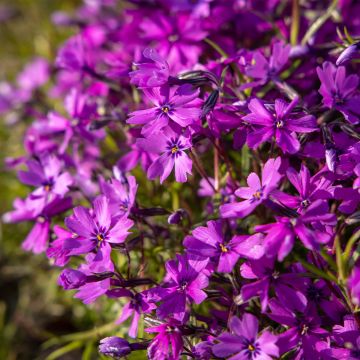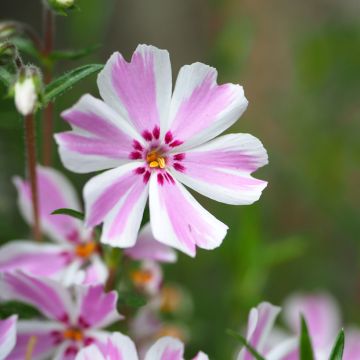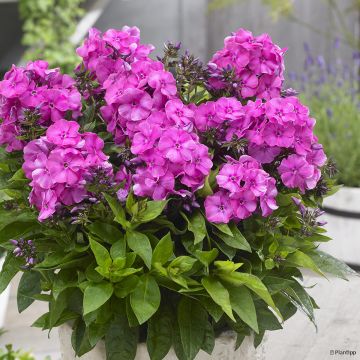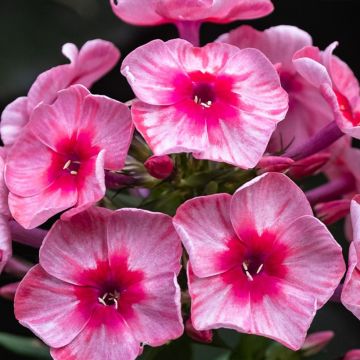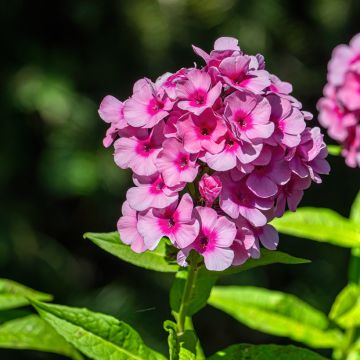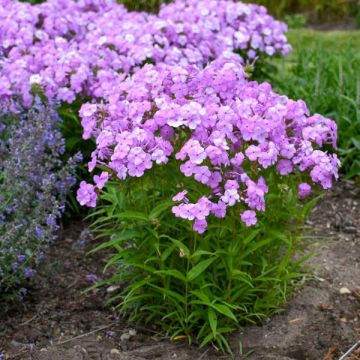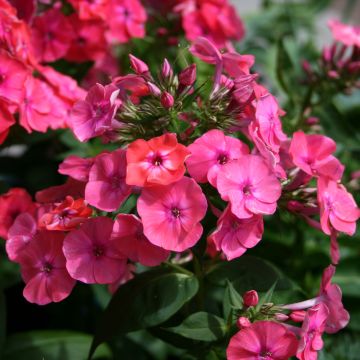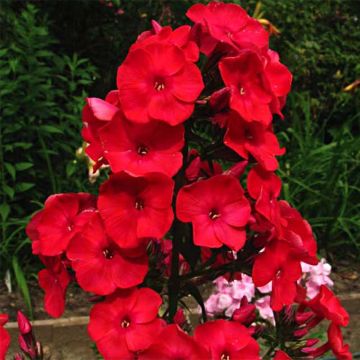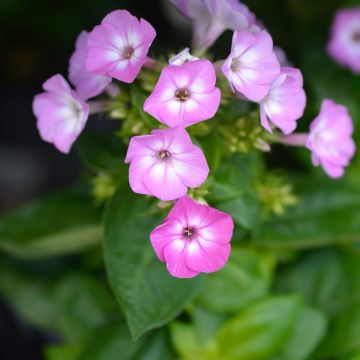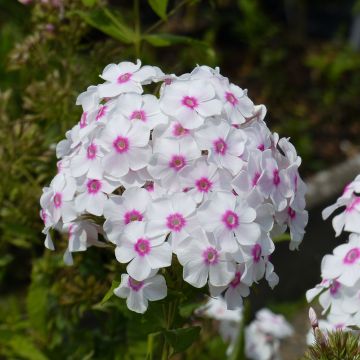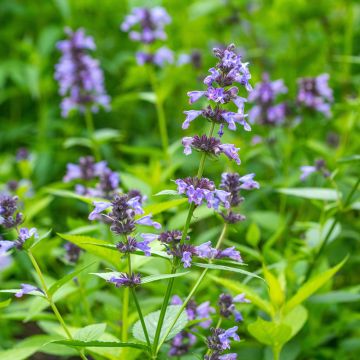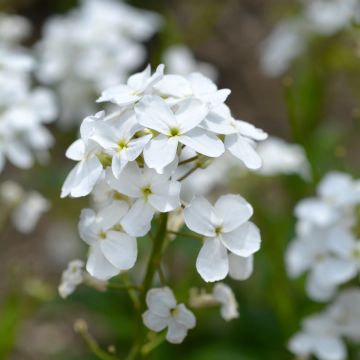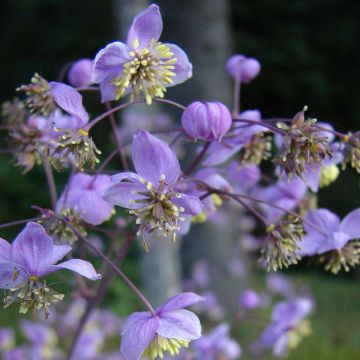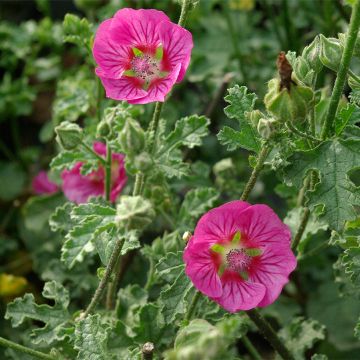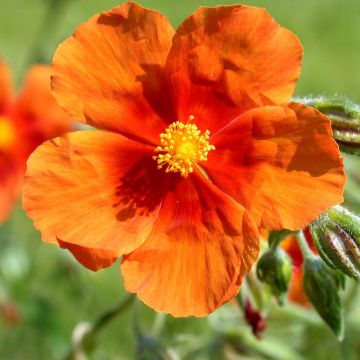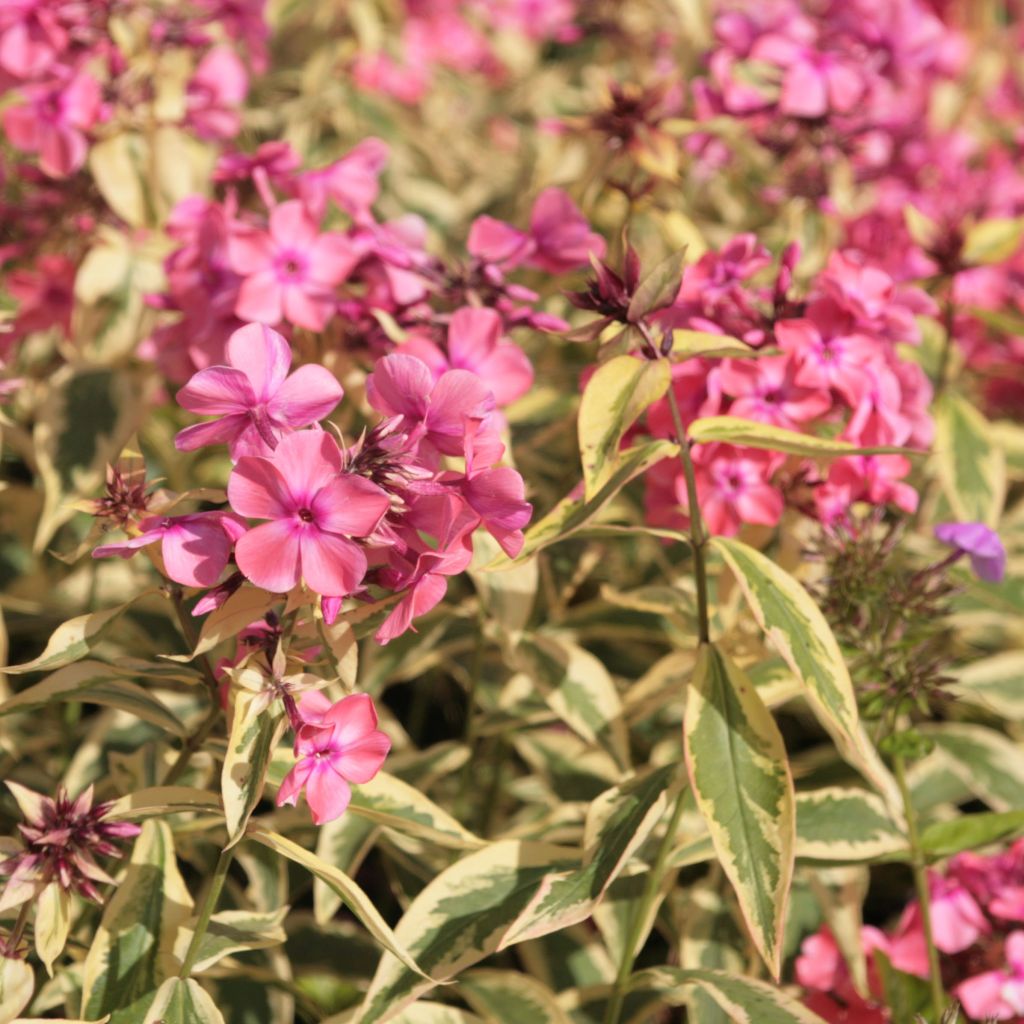

Phlox paniculata Becky Towe
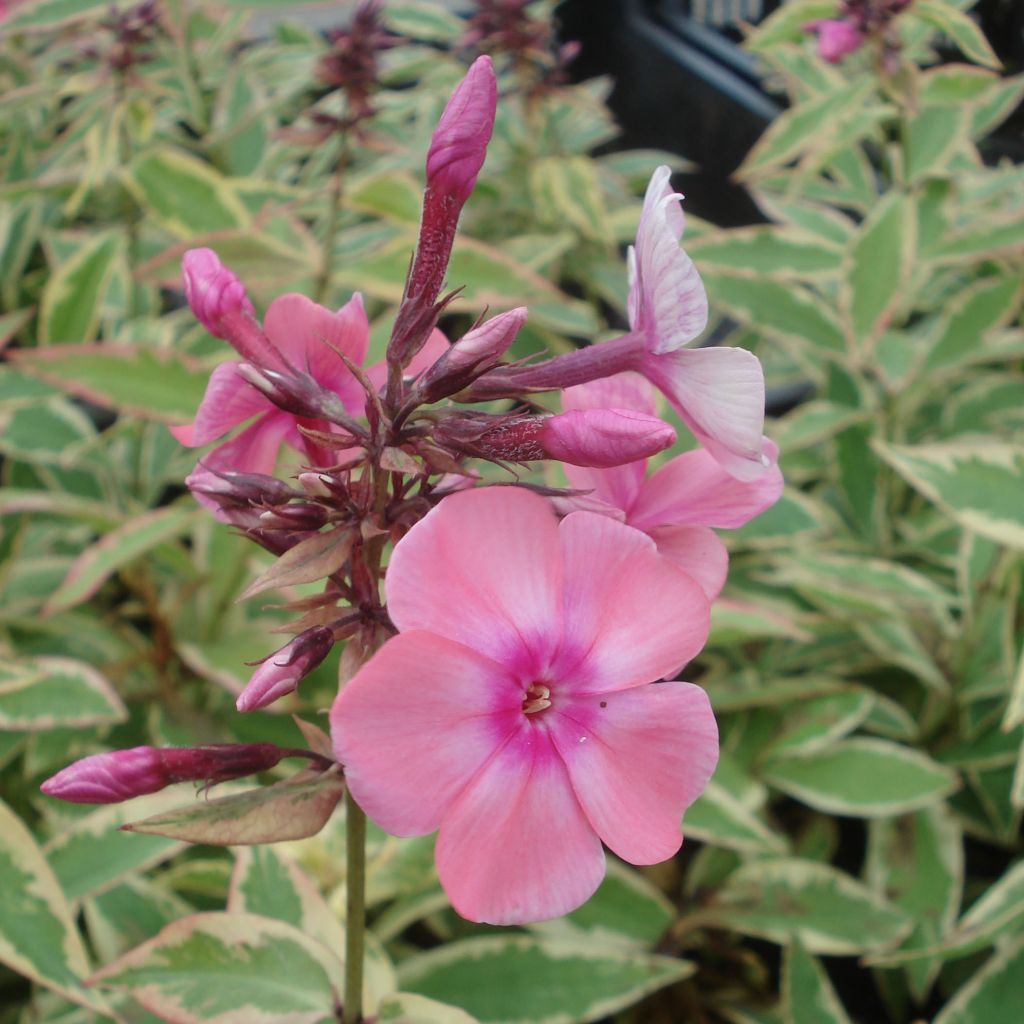

Phlox paniculata Becky Towe
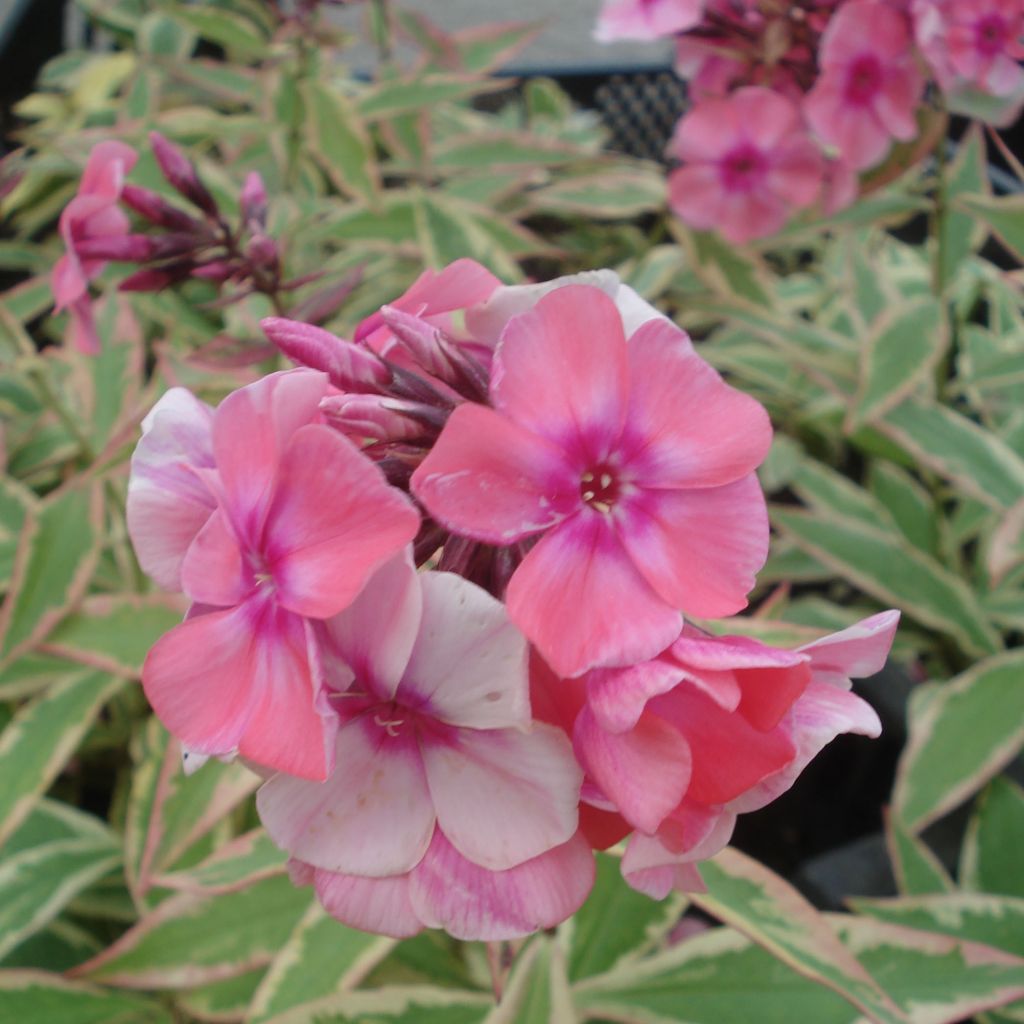

Phlox paniculata Becky Towe
Phlox paniculata Becky Towe
Phlox paniculata Becky Towe
Garden Phlox, Summer Phlox, Perennial Phlox
Very disappointed with the feeble and half-broken young plant. It hasn't recovered!
Emilie, 02/07/2019
Why not try an alternative variety in stock?
View all →This plant carries a 12 months recovery warranty
More information
We guarantee the quality of our plants for a full growing cycle, and will replace at our expense any plant that fails to recover under normal climatic and planting conditions.
From €5.90 for pickup delivery and €6.90 for home delivery
Express home delivery from €8.90.
Does this plant fit my garden?
Set up your Plantfit profile →
Description
Phlox paniculata 'Becky Towe' has a unique variegated foliage. Its beautiful light green leaves, marginated in yellow and then white bring a touch of brightness to summer planting beds. These large panicles are not to be outdone: made up of multiple small carmine pink flowers with a darker eye which are vibrant and vivid. They bloom in July and August, attracting butterflies and providing us with cheerful and colourful bouquets.
Phlox paniculata are essential in all cottage or romantic gardens. Their bushy habit is perfect for mixed borders and their size allows them to be interspersed at different levels. Their flowering is abundant, colourful, fragrant, and they bring the flower beds to life with the coming and going of insects that are very fond of them. Don't hesitate to adopt them in large numbers, they will allow you to also create long-lasting bouquets. They appreciate damp, well-drained, and rather rich soil. Their flowering is more spectacular in the sun, but they also thrive in partial shade. They are hardy and tolerate temperatures to - 15°C (59°F). To enjoy a long flowering period, don't hesitate to remove faded flowers as they appear.
This vigorous herbaceous perennial has erect stems, reaching 70 cm (28in) in height, bearing large panicles at their tops made up of multiple small flowers measuring 2 to 3 cm (1in) in diameter. Their corolla, long tubular at the base, abruptly opens into five lobes and takes the shape of a cup, giving them a star-like appearance. Packed side by side, they form a beautiful dome with intense shades. A pink tending towards carmine, highlighted by a darker centre. These warm colours are enhanced by foliage with sharper hues. The lanceolate leaves are light green in the centre with yellowish margins, evolving towards creamy white. Deciduous, they are arranged regularly along the stems in an alternate manner.
'Becky Towe' is a Phlox that can reach a spread of 50 cm (20in). It fits easily into summer flower beds with bright colours. It will thrive in a multicoloured ensemble alongside Echinaceas, Dahlias, Lupins, and all its Phlox cousins. You can play with several other themes: pink, with hybrid Lobelia 'Monet Moment' and Monarda 'Croftway pink' or variegated, with Caryopteris divaritaca 'Electrum' and Heucherella 'Stoplight'.
Report an error about the product description
Phlox paniculata Becky Towe in pictures
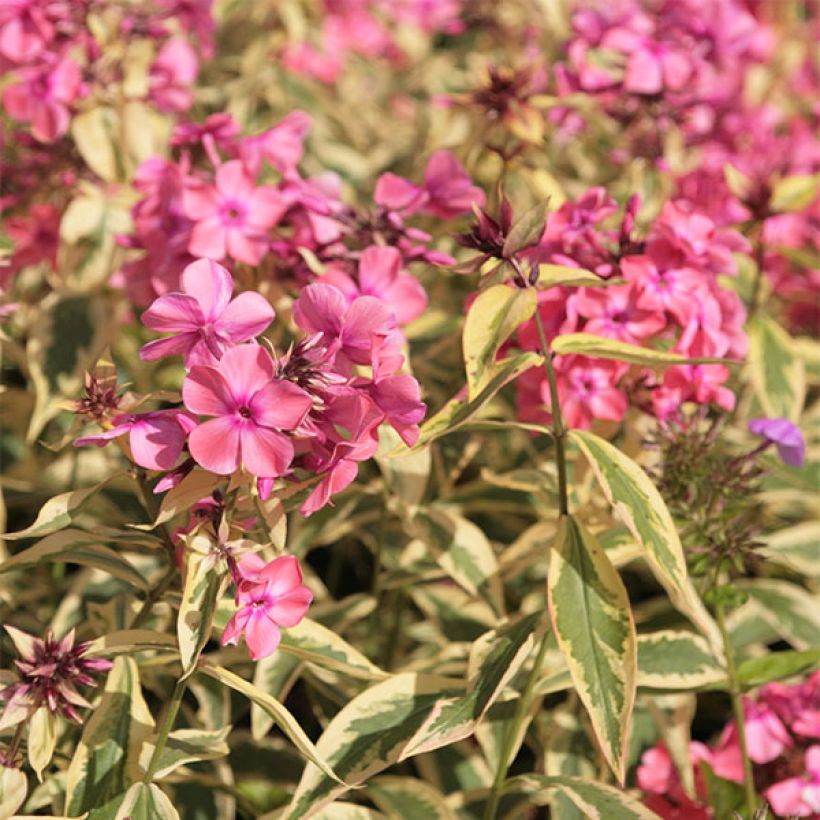

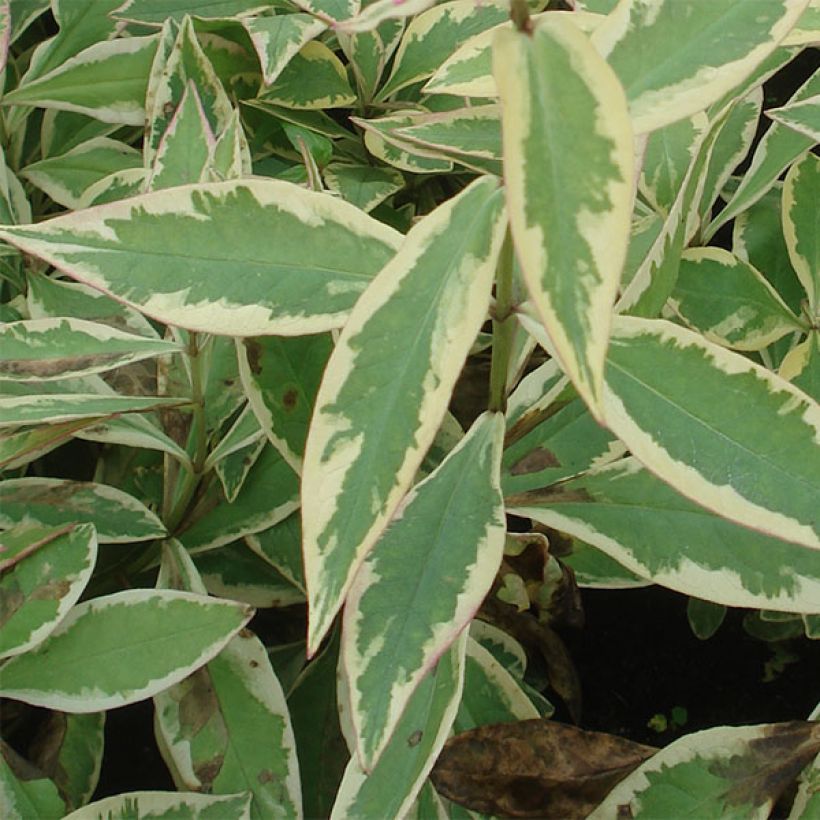

Flowering
Foliage
Plant habit
Botanical data
Phlox
paniculata
Becky Towe
Polemoniaceae
Garden Phlox, Summer Phlox, Perennial Phlox
Cultivar or hybrid
Other Phlox
Planting and care
Phlox paniculata 'Becky Towe' is an easy to grow plant. It will prefer a damp and rich soil, even clay soils which have good drainage. If your summers are hot and dry, monitor the watering during the first year or mulch the base to protect it. It tolerates light shade.
Like most Phlox, it remains sensitive to powdery mildew. A preventive treatment can therefore be beneficial.
Watch out for slugs in spring when new vegetation starts to appear and remove faded flowers during the season.
You can divide the stump every 3-4 years depending on its development.
Planting period
Intended location
Care
-
, onOrder confirmed
Reply from on Promesse de fleurs
Summer flowering perennials
Haven't found what you were looking for?
Hardiness is the lowest winter temperature a plant can endure without suffering serious damage or even dying. However, hardiness is affected by location (a sheltered area, such as a patio), protection (winter cover) and soil type (hardiness is improved by well-drained soil).

Photo Sharing Terms & Conditions
In order to encourage gardeners to interact and share their experiences, Promesse de fleurs offers various media enabling content to be uploaded onto its Site - in particular via the ‘Photo sharing’ module.
The User agrees to refrain from:
- Posting any content that is illegal, prejudicial, insulting, racist, inciteful to hatred, revisionist, contrary to public decency, that infringes on privacy or on the privacy rights of third parties, in particular the publicity rights of persons and goods, intellectual property rights, or the right to privacy.
- Submitting content on behalf of a third party;
- Impersonate the identity of a third party and/or publish any personal information about a third party;
In general, the User undertakes to refrain from any unethical behaviour.
All Content (in particular text, comments, files, images, photos, videos, creative works, etc.), which may be subject to property or intellectual property rights, image or other private rights, shall remain the property of the User, subject to the limited rights granted by the terms of the licence granted by Promesse de fleurs as stated below. Users are at liberty to publish or not to publish such Content on the Site, notably via the ‘Photo Sharing’ facility, and accept that this Content shall be made public and freely accessible, notably on the Internet.
Users further acknowledge, undertake to have ,and guarantee that they hold all necessary rights and permissions to publish such material on the Site, in particular with regard to the legislation in force pertaining to any privacy, property, intellectual property, image, or contractual rights, or rights of any other nature. By publishing such Content on the Site, Users acknowledge accepting full liability as publishers of the Content within the meaning of the law, and grant Promesse de fleurs, free of charge, an inclusive, worldwide licence for the said Content for the entire duration of its publication, including all reproduction, representation, up/downloading, displaying, performing, transmission, and storage rights.
Users also grant permission for their name to be linked to the Content and accept that this link may not always be made available.
By engaging in posting material, Users consent to their Content becoming automatically accessible on the Internet, in particular on other sites and/or blogs and/or web pages of the Promesse de fleurs site, including in particular social pages and the Promesse de fleurs catalogue.
Users may secure the removal of entrusted content free of charge by issuing a simple request via our contact form.
The flowering period indicated on our website applies to countries and regions located in USDA zone 8 (France, the United Kingdom, Ireland, the Netherlands, etc.)
It will vary according to where you live:
- In zones 9 to 10 (Italy, Spain, Greece, etc.), flowering will occur about 2 to 4 weeks earlier.
- In zones 6 to 7 (Germany, Poland, Slovenia, and lower mountainous regions), flowering will be delayed by 2 to 3 weeks.
- In zone 5 (Central Europe, Scandinavia), blooming will be delayed by 3 to 5 weeks.
In temperate climates, pruning of spring-flowering shrubs (forsythia, spireas, etc.) should be done just after flowering.
Pruning of summer-flowering shrubs (Indian Lilac, Perovskia, etc.) can be done in winter or spring.
In cold regions as well as with frost-sensitive plants, avoid pruning too early when severe frosts may still occur.
The planting period indicated on our website applies to countries and regions located in USDA zone 8 (France, United Kingdom, Ireland, Netherlands).
It will vary according to where you live:
- In Mediterranean zones (Marseille, Madrid, Milan, etc.), autumn and winter are the best planting periods.
- In continental zones (Strasbourg, Munich, Vienna, etc.), delay planting by 2 to 3 weeks in spring and bring it forward by 2 to 4 weeks in autumn.
- In mountainous regions (the Alps, Pyrenees, Carpathians, etc.), it is best to plant in late spring (May-June) or late summer (August-September).
The harvesting period indicated on our website applies to countries and regions in USDA zone 8 (France, England, Ireland, the Netherlands).
In colder areas (Scandinavia, Poland, Austria...) fruit and vegetable harvests are likely to be delayed by 3-4 weeks.
In warmer areas (Italy, Spain, Greece, etc.), harvesting will probably take place earlier, depending on weather conditions.
The sowing periods indicated on our website apply to countries and regions within USDA Zone 8 (France, UK, Ireland, Netherlands).
In colder areas (Scandinavia, Poland, Austria...), delay any outdoor sowing by 3-4 weeks, or sow under glass.
In warmer climes (Italy, Spain, Greece, etc.), bring outdoor sowing forward by a few weeks.


































